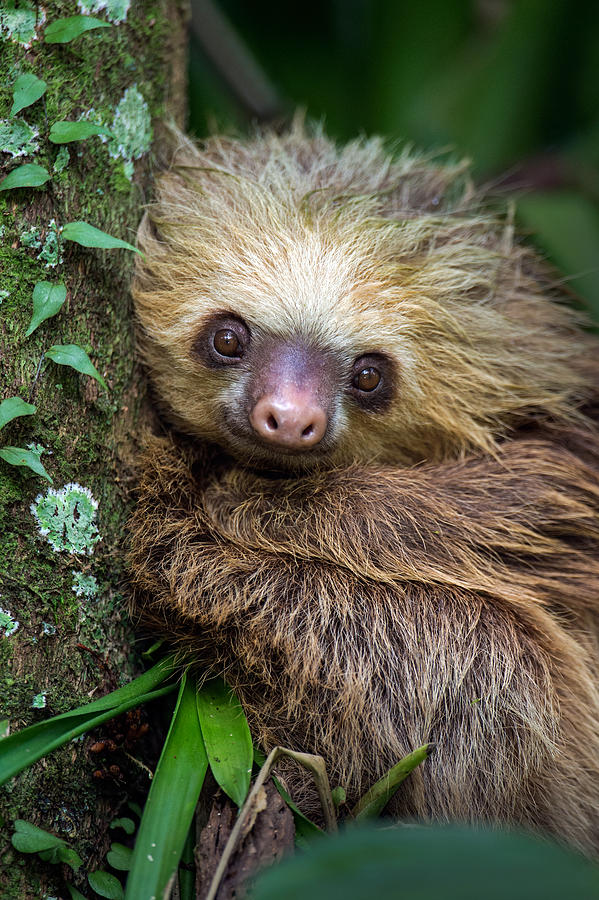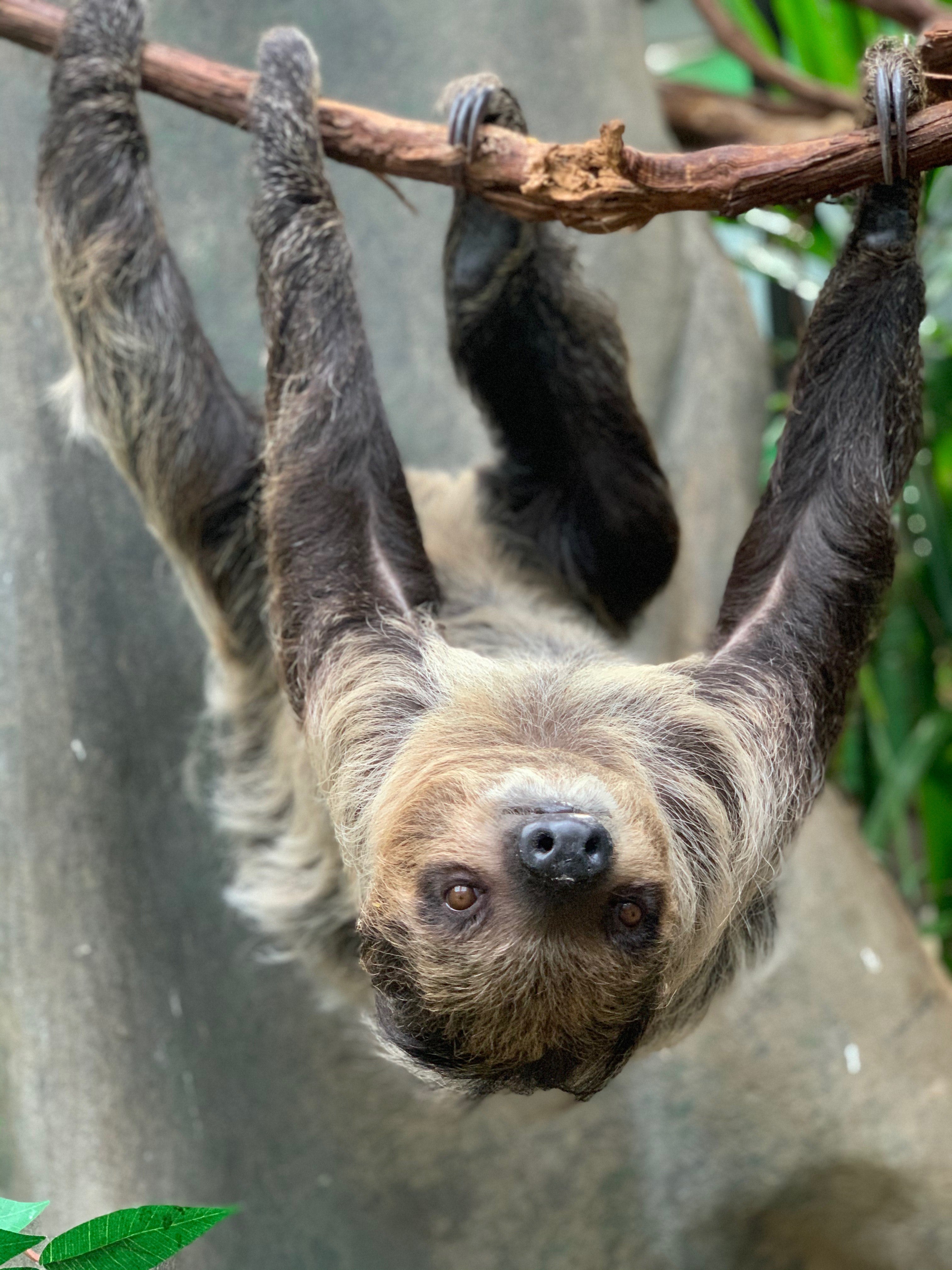


hoffmanni lasts 11.5 months (309 days) according to Eisenberg & Maliniak (1978 1985) who used special techniques to verify the gestations. Hoffmann's two-toed sloth lemur is found in Bolivia Brazil Colombia Costa Rica Ecuador Honduras Nicaragua Panama Peru Venezuela. The longevity of two-toed sloths is 29 years, according to Moeller (1975, quoted by Wetzel, 1982) but it may even be longer in Hoffmann's sloth (up to 32 years, according to Nowak's sources). Source: National Zoo Intended Audience: General Reading Level: Middle School Two species of sloth belong in this genus, Choloepus didactylus and Choloepus Hoffmanni.

The Southern two-toed sloth is found in tropical rainforest canopies. It is often referred to as the southern two-toed sloth. Source: Animal Diversity Web Intended Audience: General Reading Level: Middle School is found in northern Brazil, Colombia, Ecuador, French Guiana, Guyana, Peru, Suriname, and Venezuela. A two-fingered female sloth will give birth to a single baby after a gestation period of 11.5 months, while a three-fingered sloth is thought to give birth after approximately six months. Source: Arkive Intended Audience: General Reading Level: Middle School The southern two-toed sloth is the size of a small dog. Source: San Diego Zoo Intended Audience: General Reading Level: Middle School Southern Two-toed Sloth - Choloepus didactylus Hoffmann's Two-toed Sloth - Choloepus hoffmanni Threatened in NH Endangered in NH Breeds in NH (birds)Īfrica Asia Australia/Oceania Europe North America South America NH Click for More Info Click for Image New Hampshire Species Threatened in US Endangered in US Introduced Status and range is taken from ICUN Redlist. Least Concern Near Threatened Vulnerable Endangered Critically Endangered Extinct in Wild Extinct Not Enough Data They are nocturnal and spend most of their time sleeping. They are herbivores and eat leaves, buds, fruit, and twigs. Two-toed sloths hang upside down in trees and their backwards growing fur helps rain run off of them. The two-toed sloth get their name because they have two claws on the front foot and three on the back foot.

Their fur grows from their stomach and curls around to their back. They have long, grayish-brown fur that takes on a greenish color because of the algae that grows on it. Two-toed sloths have two long claws on their front paws and three claws on their rear paws. They have round heads, small ears, long forelimbs and hind limbs, and a stumpy tail. Two-toed sloths are larger than three-toed sloths. Rainforests in Central and South America. They also regulate their body temperatures by moving in and out of the sun.There are two species in this family. They have reduced muscles, about half the relative weight of most terrestrial mammals, so they cannot afford to keep warm by shivering. It is able to swim, making it possible to cross rivers and creeks. It is a solitary, nocturnal and arboreal animal, found in rainforests. Sloths have a metabolic rate that is only 40 to 45 percent of what would be expected for their body weight. The two-toed sloth is a species of sloth from South America, found in Venezuela, the Guyanas, Colombia, Ecuador, Peru and Brazil north of the Amazon River. Sloths maintain a low, but variable body temperature that ranges from 86 to 93 degrees Fahrenheit (30 to 34 C), which falls during cooler hours of the night, in wet weather, and whenever the animals are inactive. Also known as the two-toed, pygmy, or dwarf anteater, the silky anteater (Cyclopes didactylus) is the smallest and least-known member of the family. Their hair curves from stomach toward their back this is opposite from most mammals. Their fur also harbors moths, ticks and beetles. This greenish tint camouflages them in the forest canopy. They possess a short, fine undercoat, and an overcoat of longer, coarser hairs, which turn green in moist conditions due to algae growth.Įach strand of brownish-gray hair has grooves running from top to bottom, where two species of blue-green algae grow. The head is short and flat, with a snub nose, rudimentary ears, and large eyes. A sloth's body consists of a short neck with four long limbs of equal length, ending in two 3 to 4 inch (8 to 10 centimeter) long curved claws.


 0 kommentar(er)
0 kommentar(er)
